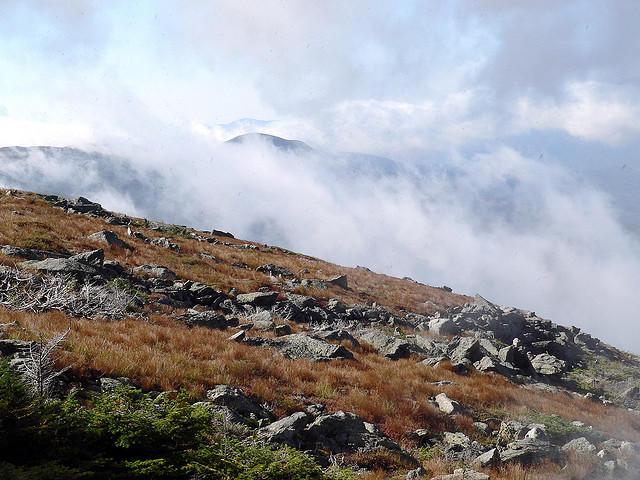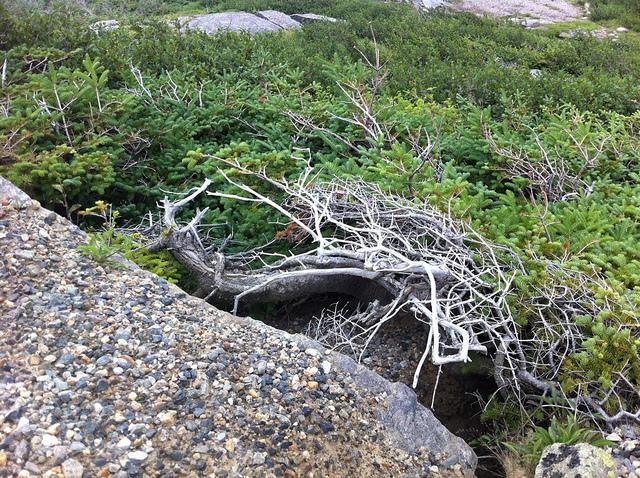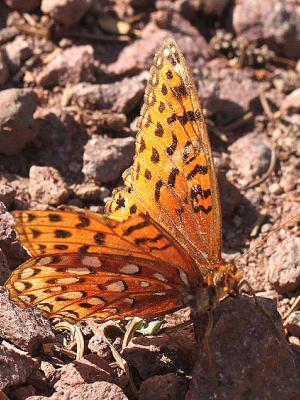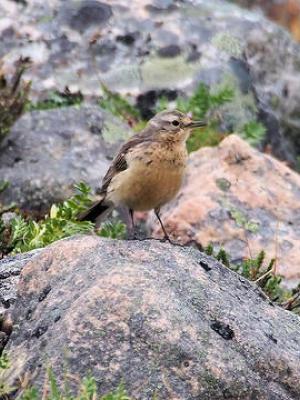Something Wild

A life above the clouds and in the winds of NH's alpine zones
So the thing about “nature shows” - even this one - is that we tend to talk about plant and animal species in pretty independent terms. "The red-tailed hawk eats this, sounds like that, does this in the winter…" But as we’ve tried to explain over the years (here at Something Wild) the hawk is just one resident in complex ecological puzzle; she interacts with other animals and plants in the neighborhood. In this installment of NH’s Wild Neighborhoods we're going to take a look at another of NH's natural communities: the alpine zone!
You don’t need a time machine to investigate this particular natural community, but visiting an alpine zone is a bit like traveling through time. Alpine zones are the last remaining vestige of what New England's landscape looked like 12,000 years ago just after the last glacier melted away. And there are a lot of cool things about the alpine habitat.
In addition to being among the coldest parts of the state, alpine zones are also the highest points of the state. They're defined as areas above tree line, which in our latitude begins at around 4,800 feet above sea level. Alpine zones are also among our scarcest ecosystems in New Hampshire with no more than a dozen square miles of this habitat within our borders.
These peaks function like island refuges, where some of our most cold-hardy species can survive and are not out-competed by other plants. And it’s not just the cold that keeps species from living or even visiting this neighborhood, it’s the wind. At 5-6,000 feet the jet stream actually hits the summits. The unrelenting gusts prune foliage and wick moisture away from anything that tries to put down roots.

One of the remarkable things about this neighborhood is its forest. While the Alpine Zone is defined as the absence of trees, what it does have is krumholz. This German word for “crooked wood” is the perfect name for the gnarly low growing trees and bushes that cling to the cracks in the rocks: trees like the dwarf willow and shrubs like lapland rosebay and creeping snowberry. These arctic loving plants form the foundation of this particular eco-system.

The krumholz supports a surprising variety of insects: a little known alpine grasshopper, a wingless scorpion fly and several types of wolf-spiders. And in one of the state's toughest habitats the sky-islands are also home to two unique butterflies. New Hampshire's windy presidential range is the only place in the world that you’ll find the drab white mountain arctic, and the bright orange white mountain fritillary. These butterflies are not as delicate as they look - they even tough out the winter up there! So the adult butterflies die off in the fall, but their caterpillars pupate and spend winter in the soil just a couple of inches below the surface. The butterflies themselves are mostly active on "warm" summer days.

Summer in an alpine zone is not the oppressive triple-H affair we experience elsewhere. Aside from times of clouds and fog, humidity stays low and the elevation keeps things chill. In July and August it can be nearly 30-degrees cooler on top of Mount Washington than in the valleys below. The weather keeps most birds away, too, but the american pipit is a notable exception. The pipit is the only obligate alpine nesting bird species found in New England (that means it can only nest in alpine zones). In 1998, a New Hampshire Audubon study combed the presidential peaks and banded about 30 pipits.
Despite the harsh conditions, there’s really a lot of life in the alpine zone.
